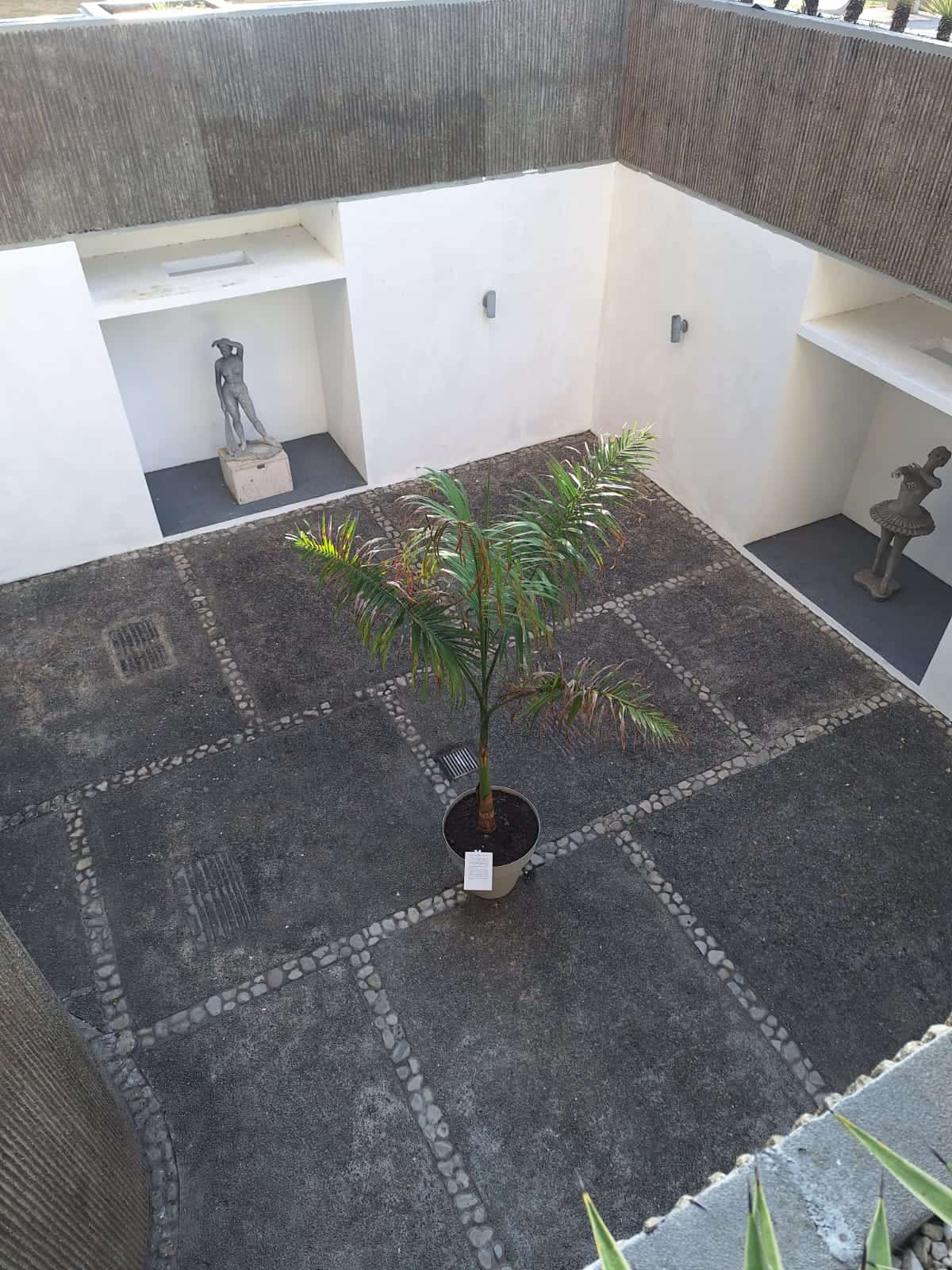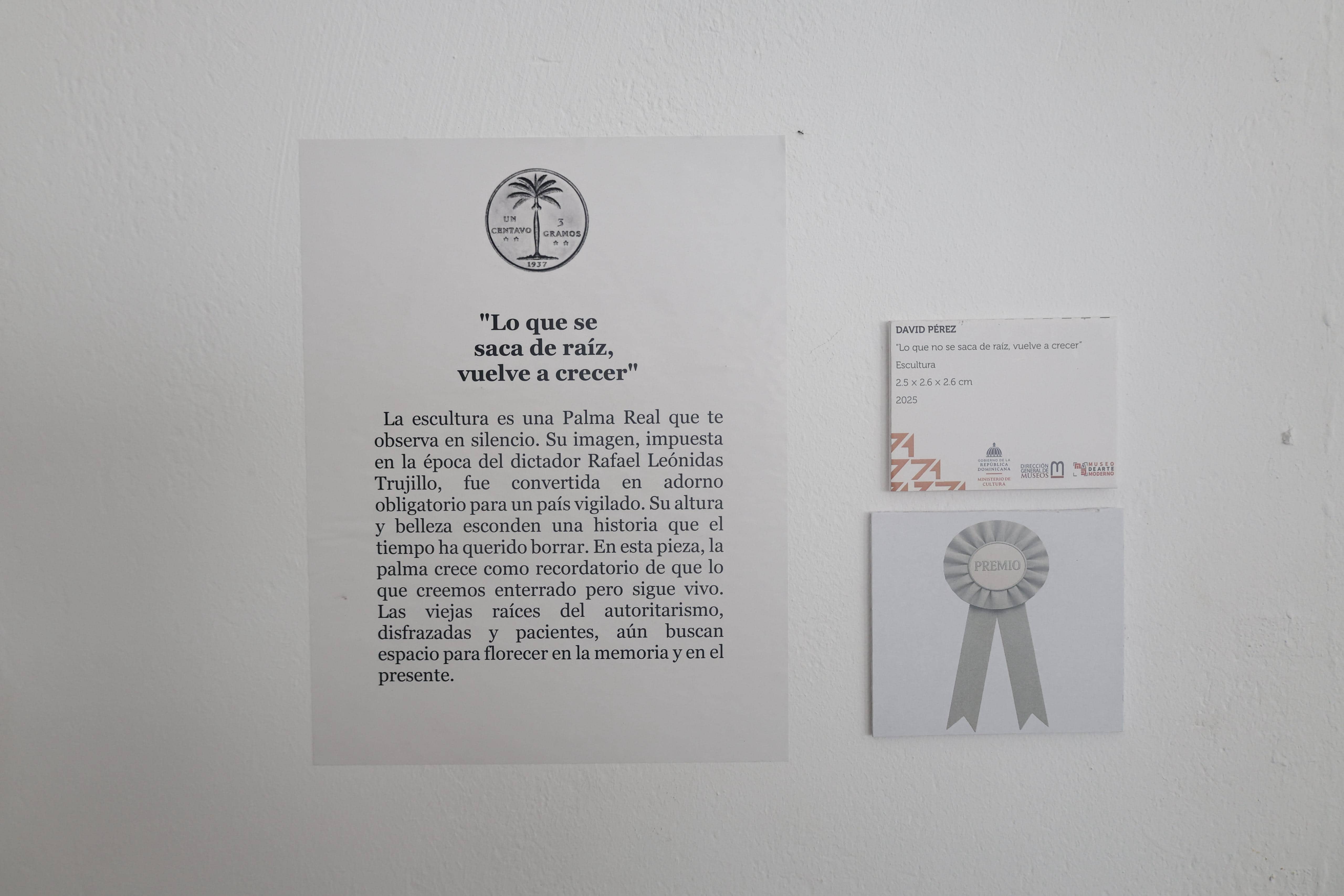Codap wants a before and after at the Biennial

For the first time , the Dominican College of Plastic Artists ( Codap ) has spoken out publicly about the controversy surrounding the work "What is pulled out by the roots grows back" by the artist David Pérez, which won an award at the National Biennial of Visual Arts, along with eight other pieces.
In a conversation with Diario Libre , Joel Gonell , president of Codap , and Wilson Santana, visual artist and president of the Codap ethics committee, explain why they demand the annulment of the award and defend respect for the contest rules .
"This is the first time we've given an interview as figures , because we've been very careful," explains Joel Gonell . " Common sense has prevailed , and will continue to prevail, but we're firm in our commitment to what we want."
The Codap's position, Gonell explains, was made public in a letter sent to the Biennial's organizing committee and the Ministry of Culture. In that letter, they requested the annulment of the prize awarded to David Pérez, arguing that the winning work—a planted palm tree— violates the competition's rules .
"We have no animosity toward any artistic movement or the artist, because he's an artist just like us, and he did his job," says Gonell.
"However, the selection of a palm tree as a sculpture creates conflict because it violates the competition rules ."
What bases does it violate?
Wilson Santana details the key point: "The main point is Article 8, paragraph 1, which states that any museum work that enters the competition cannot be made of perishable materials . In this case, the palm can last 500 years , but it is still biodegradable ."
Added to this is the issue of size . "There was a limit of three meters by three meters. If the plant grows, it will exceed those dimensions. That leaves it out of bounds from the start," adds Santana.
Both agree that the problem lies not with the artist, but with the committee that allowed his participation: "There was a prior filter to reject works outside the guidelines. That responsibility fell on the organizers, not the artist ," Gonell points out.
Conceptual art
The jury justified its decision by arguing that the art is procedural and conceptual . But for Santana, this defense is untenable within a Biennial with clear rules:
- "They talk about ready-mades , like when Marcel Duchamp designed a urinal in 1917. That's a trend; you can do it at a fair, not at the Biennial, which has rules that don't allow for ready-mades . Here, we all work with materials, we shape, we intervene. You can't just award a curatorial text or an idea."
The outrage also stems from a sense of collective justice . Gonell recalls that more than 600 entries were received, of which only 200 were selected.
"By awarding this work, 400 artists who did comply with the rules lost their chance of being considered. We want transparency and the publication of the jury's selection forms."
Santana adds that the decision generates distrust: "The artist submits his work expecting credibility. But if the rules are violated, the Biennial descends into arbitrariness and cronyism. We cannot allow that."
For many creators, the Biennial is not just a competition, but a unique showcase for years of silent work in workshops and communities. It's the space where young and established careers converge, and that's why every decision weighs so heavily on the expectations of those aspiring to legitimate recognition.
Call to Culture
The Codap leaders don't hide their annoyance with the makeup of the organizing committee . "In most cases, those who vote are art critics , not artists. And they've prioritized their own opinions over the rules," says Gonell.
For this reason, Codap has requested the direct intervention of the Minister of Culture , Roberto Ángel Salcedo.
"The minister has the power to reverse this decision with his signature," Gonell emphasizes. And Santana goes further: "We publicly request that the juries of this Biennial never again participate in Dominican art processes. They do not represent the artists."
Look aheadFar from wanting to boycott the event, Codap insists that its fight seeks to strengthen the Biennial . "We are not against conceptual art or contemporary movements," Santana emphasizes. "What we ask is simple: that the rules be followed. Otherwise, the event loses credibility ."
To open the debate, the association will organize an Art Forum on the Biennial on October 7 at 5:00 p.m. at the Museum of Modern Art.
"A manifesto will emerge from this with proposals for improvements for future editions. We want the Biennial to transcend our borders and become a shared heritage," says the president of the Codap ethics committee.
The final message is clear: "We want this Biennial to mark a before and after . Artists are not alone. Our mission is to defend the equity and excellence of Dominican art ," concludes Santana.
The work "What is uprooted grows back," by artist David Pérez, which won the "Sculpture" category at the 31st National Visual Arts Biennial, continues to generate debate and reaction.
Respected Mexican art critic Avelina Lésper points out, in a column published in Mexico's Milenio magazine, that palm trees are not art and reflects on whether art itself loses value at biennials, criticizing the award jury: "Trujillo fell short compared to you."
Dominican cultural manager, gallery owner, and art critic Juan José Mesa also spoke out, noting that "what's at stake is not just the reputation of the Biennial, but the credibility of Dominican cultural institutions."
It is worth noting that this year's Biennial awarded nine more works that deserve special mention: Lucía Méndez, who received the Grand Prize for "Healing Ritual"; as well as "Alain," a photograph by Fued Yamil Koussa; "Abstinence Kit," an installation by Jessica Fairxax Hirst; "Apocalyptic Mambo (The Tardigrade's Merengue)" by José Levi; "Feria 2025," a painting by José Morbán; "The Reader," an installation by the Modafoca collective; "Roots without Seeds," a drawing by Pedro Troncoso; "Palo Vivo: Between Roots and Memories," an installation by Soraya Abu Nabaá; and "The Dragonfly's Dream," a painting by Yéssica Montero.
Read more
TOPICS -
Diariolibre





